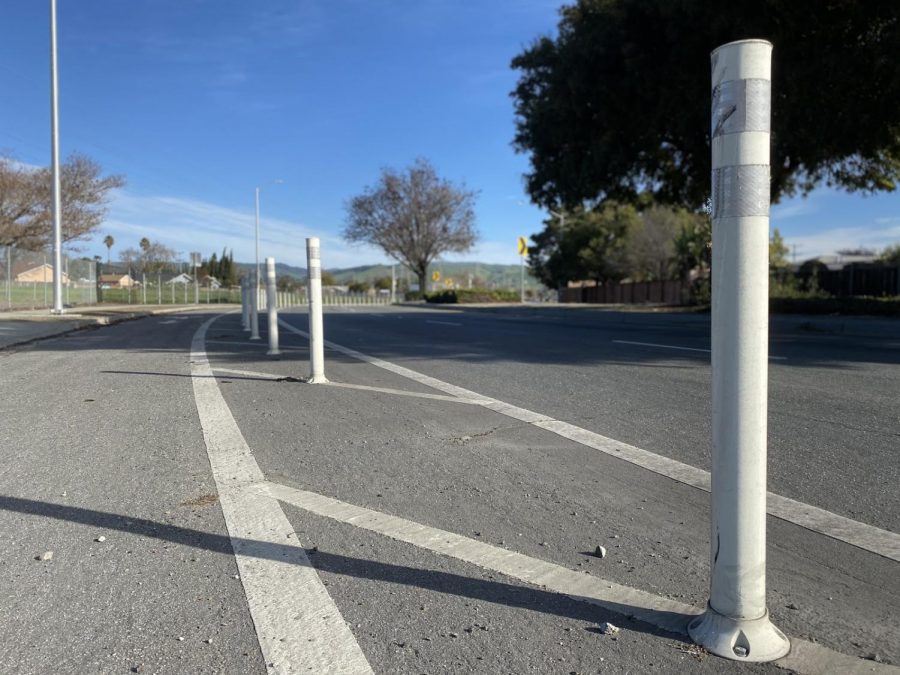Fremont’s Answer to Bicyclist Safety
Bike poles can be seen in front of the Main Fremont Library
March 17, 2020
In an attempt to help improve the safety and comfort of bikers and pedestrians around Fremont, Fremont’s Transportation Department has started the construction of bike poles, also known as delineators, around bike lanes in order to stop vehicles from driving onto them. Construction for these poles started in 2017 as one of the steps in a larger policy dubbed Vision Zero that is meant to improve the safety of everyone on the road.
As a result of the rushed and inattentive driving during peak hours in Fremont, biking can often be difficult, especially during the morning times when many Irvington students bike to school. In response, Fremont began putting up plastic bike poles to deter cars from merging onto the bike lanes as well as control car speeds on the road.
“For pedestrian safety and overall speed management, we place delineators at intersections to encourage vehicles to turn more slowly and to shorten crossing distances for pedestrians,” said Matthew Bomberg, a Senior Transportation Engineer at Fremont City. “Essentially, in doing so, we are creating what we call a ‘curb extension but with much cheaper materials. We typically focus on intersections in school areas or other areas of high pedestrian activity.”
However, while the poles are meant to prevent biking accidents, several drivers at Irvington consider them to be a nuisance. Poles can get in the way of drivers making right turns at intersections as well as provide some anxiety over hitting the bike poles. Thus, they are not always appreciated by students who drive at Irvington.
“Honestly, I’m really terrified of hitting them,” said Frankie Jensen (11), who often encountered them while driving. “Some of them look like they’re made of metal and if drivers crash into them, that could be a huge issue.”
In response to such concerns, Bomberg clarified that the bike poles constructed around Fremont are not in fact made out of metal and are also unlikely to cause damage to cars.
“The delineators that we use are sturdy and can take 100 hits up to 70 miles an hour,” Bomberg states, “But they’re not constructed out of metal; we don’t want to cause more issues than the ones that we’re trying to fix and as far as I’m aware, we haven’t had accidents as a result of these bike poles.”
Despite drivers’ concerns, bicyclists at Irvington are in support of the bike pole developments due to instances of poor driving.
“I’ve definitely had issues with drivers not really paying attention when I need to make a turn on the road,” said Madison Wong (10). “I think these poles would help decrease the number of bike accidents because they make a distinct lane for just bikes”
Bomberg also mentioned that while the poles could prevent accidents, much of the biking infrastructure in Fremont, including bike poles, was made for bicyclist comfort and based off the success of infrastructure in cities like Portland and Tokyo. Bomberg added that the new developments have led to an overall positive response from bicyclists in Fremont.
“Once we started putting them [bike poles] in, we started getting feedback from bicyclists saying that they feel a lot safer when using the bike lanes,” he explained. “Because of this, we have plans to add more delineators around Fremont in 2020.”
Overall, bicyclist safety and comfort are oftentimes overlooked and bicyclists have had to deal with this compromise by needing to be extra cautious while biking. Since bike poles help create separation between automobiles and bicyclists as well as regulate vehicle speeds, bike poles will likely remain on the road for the time being.










